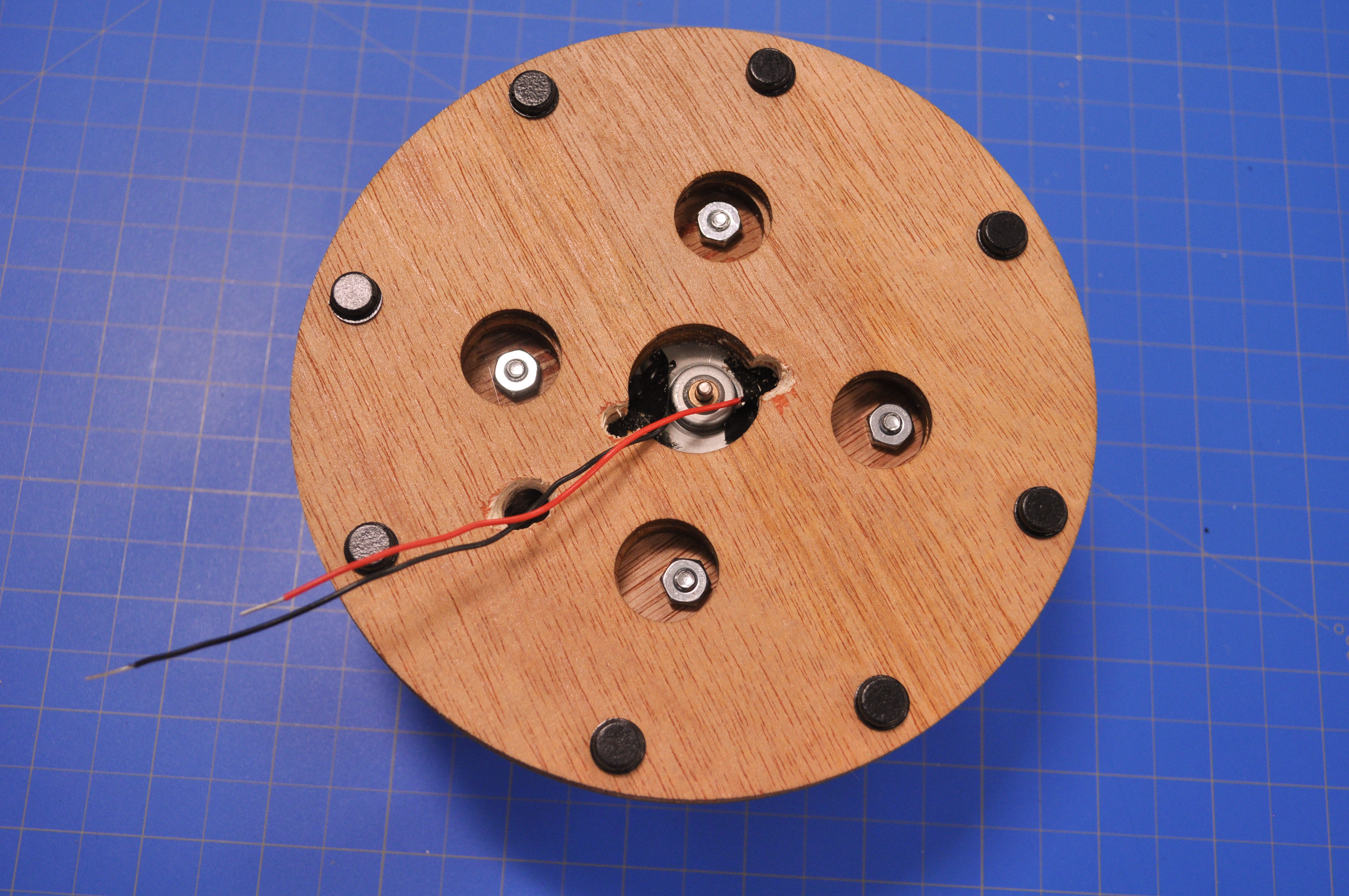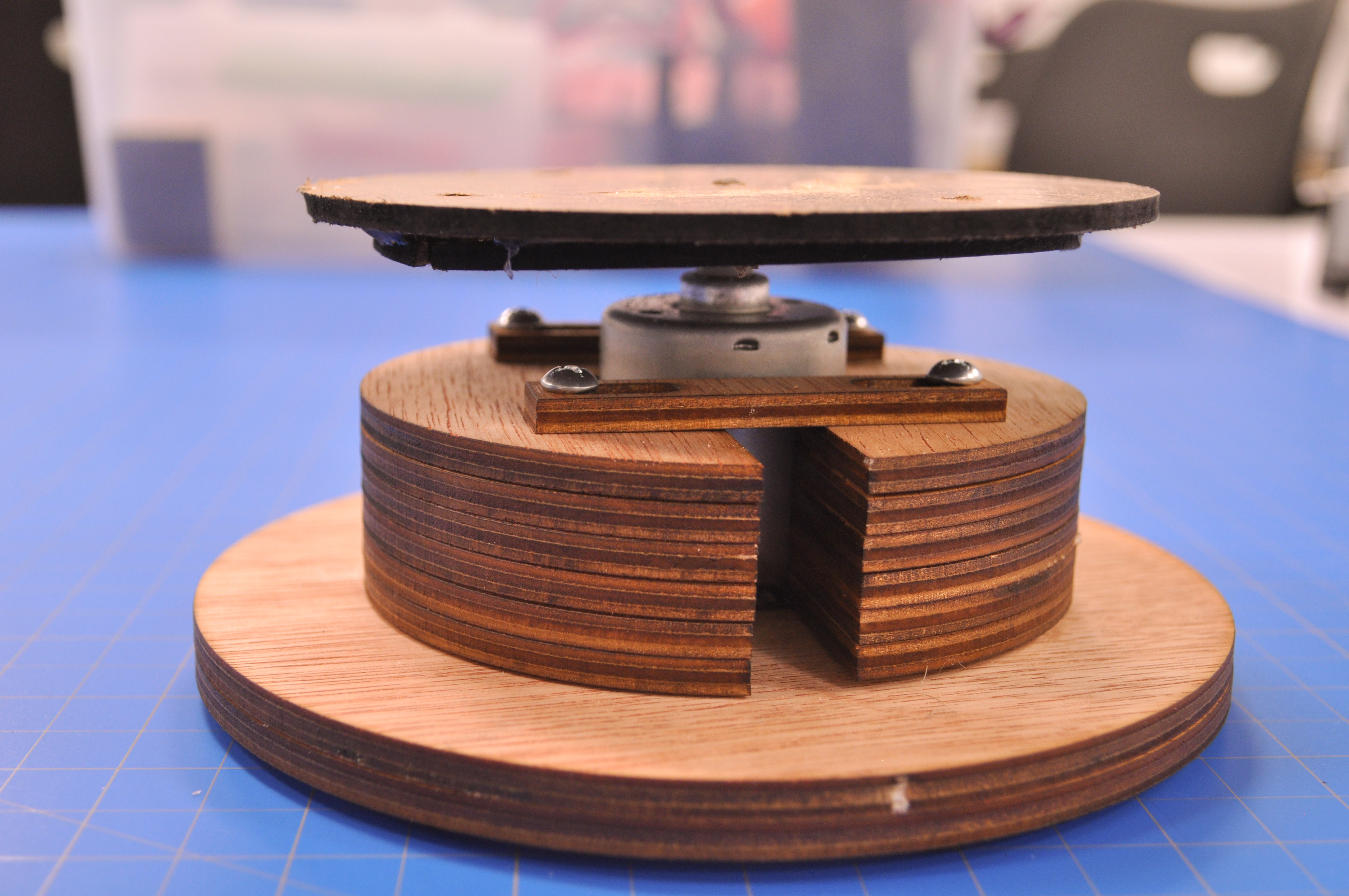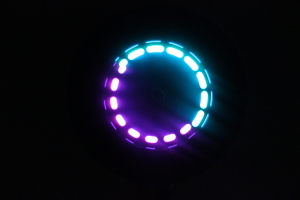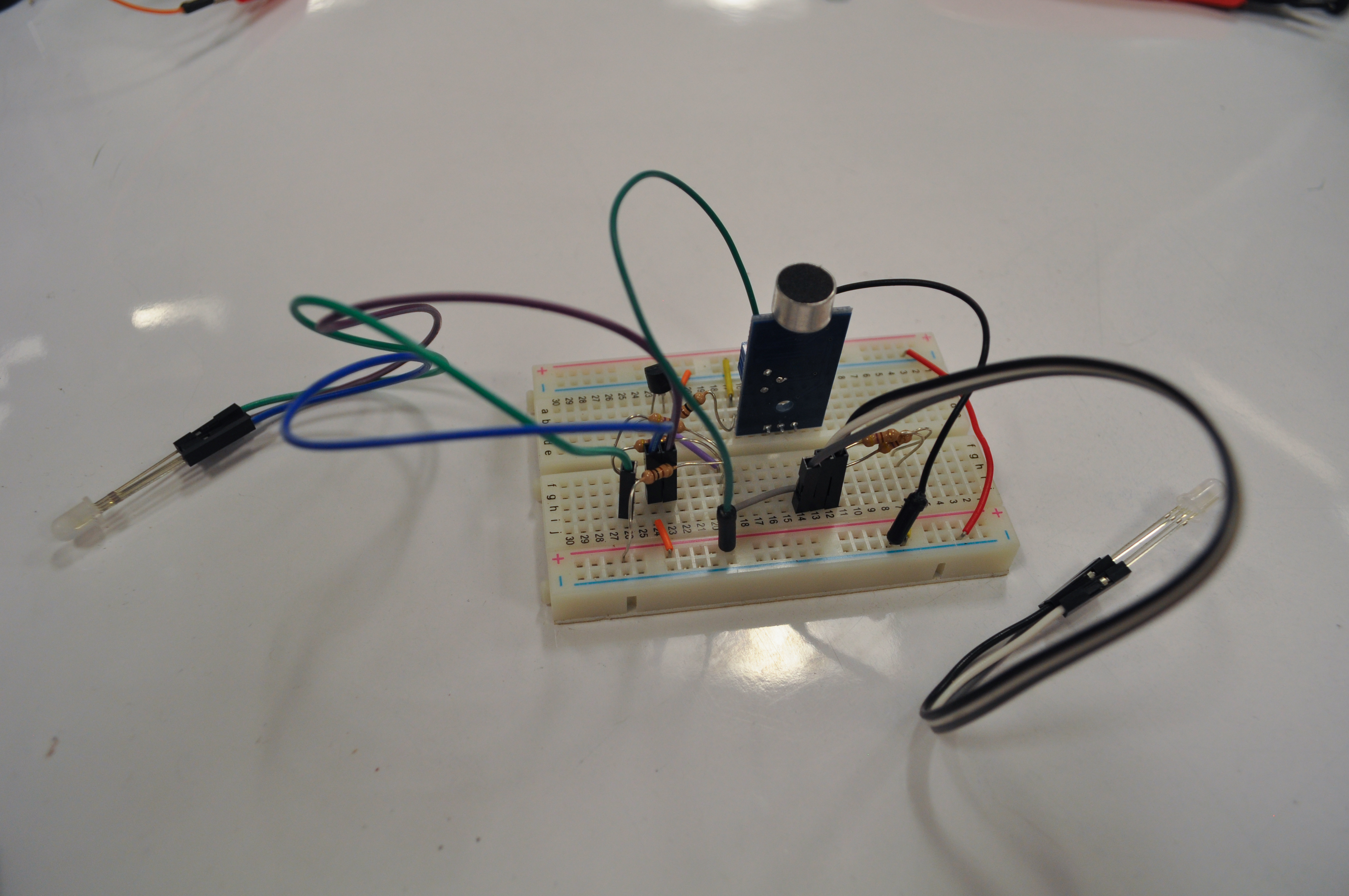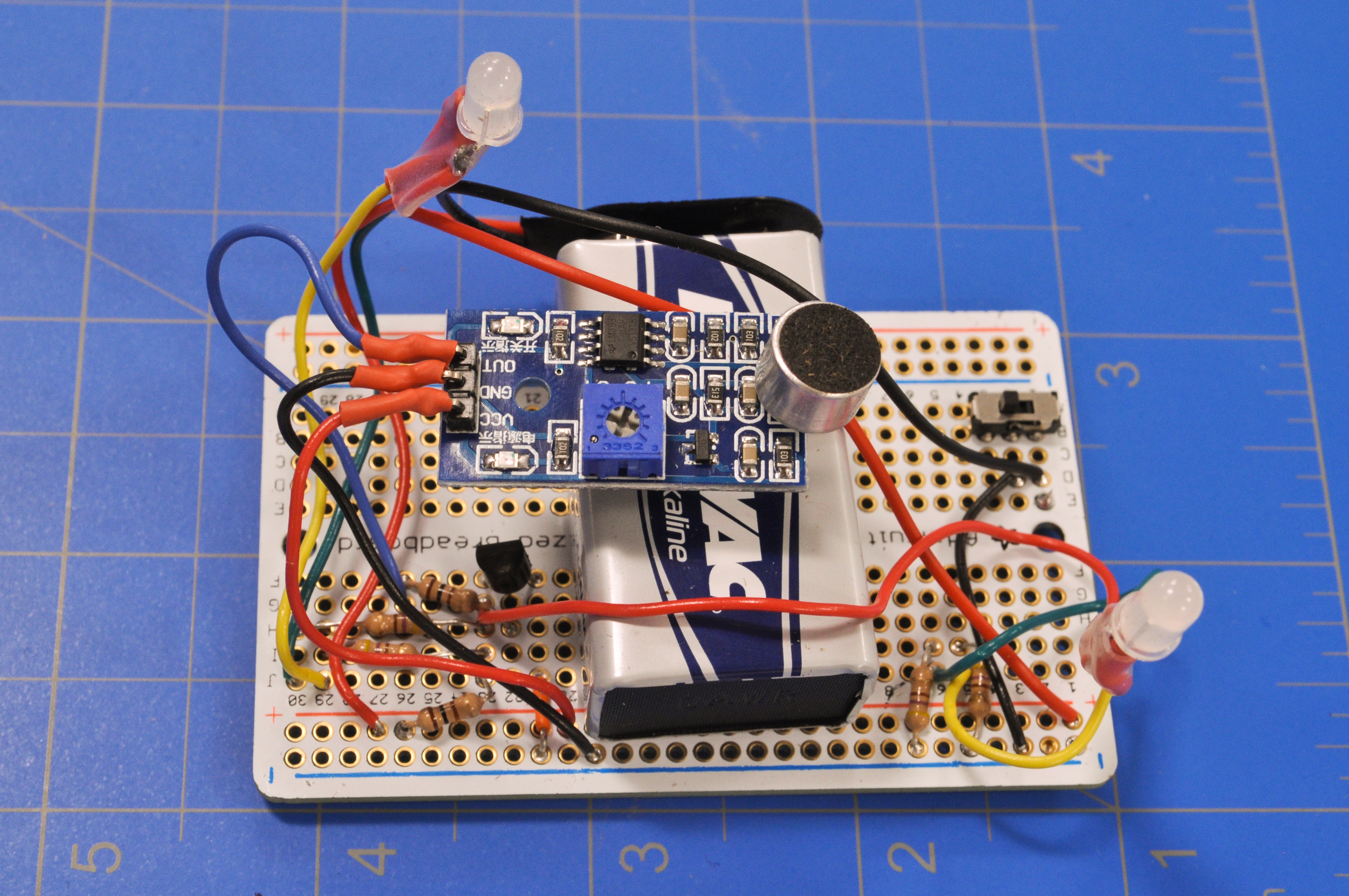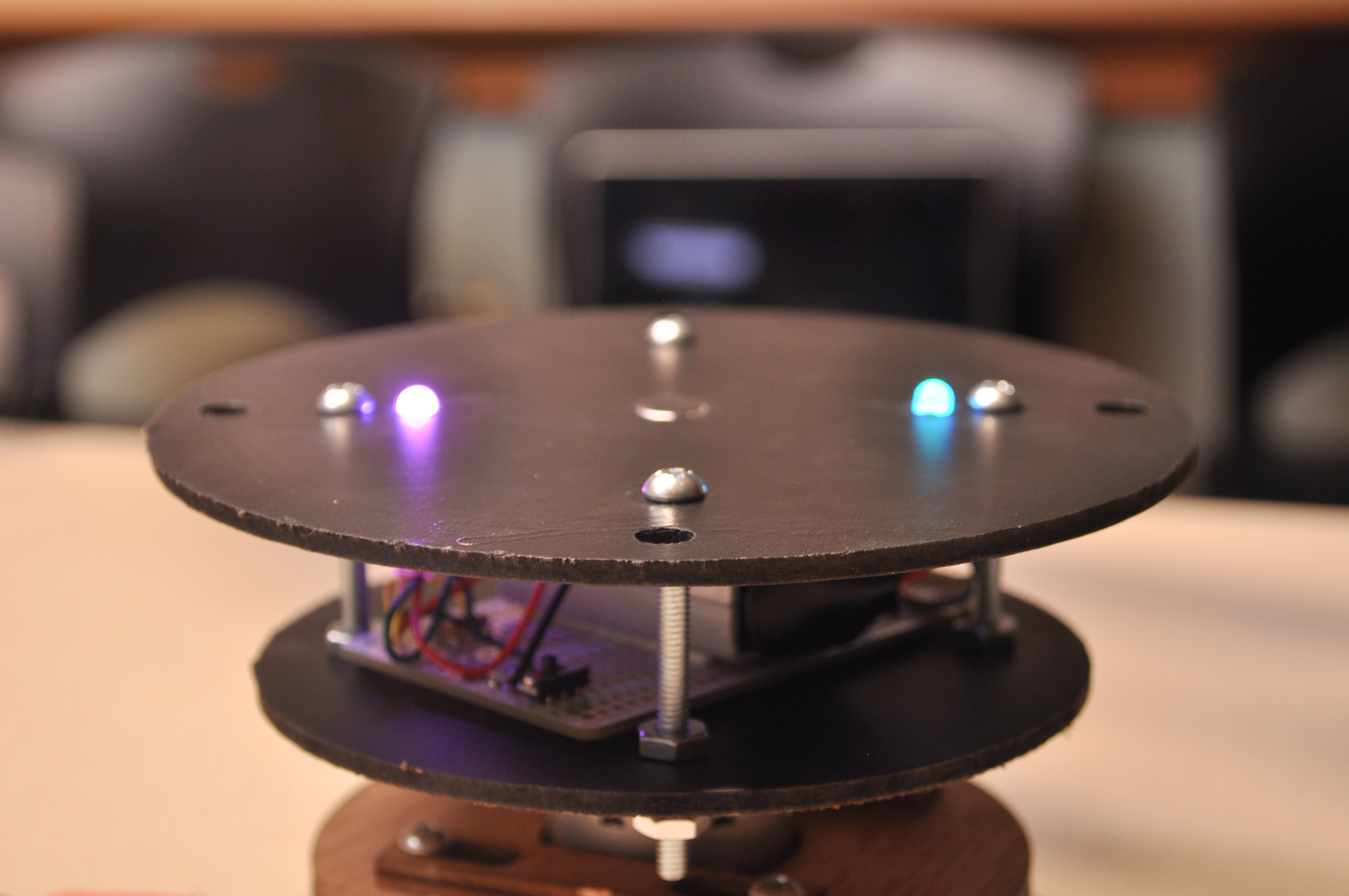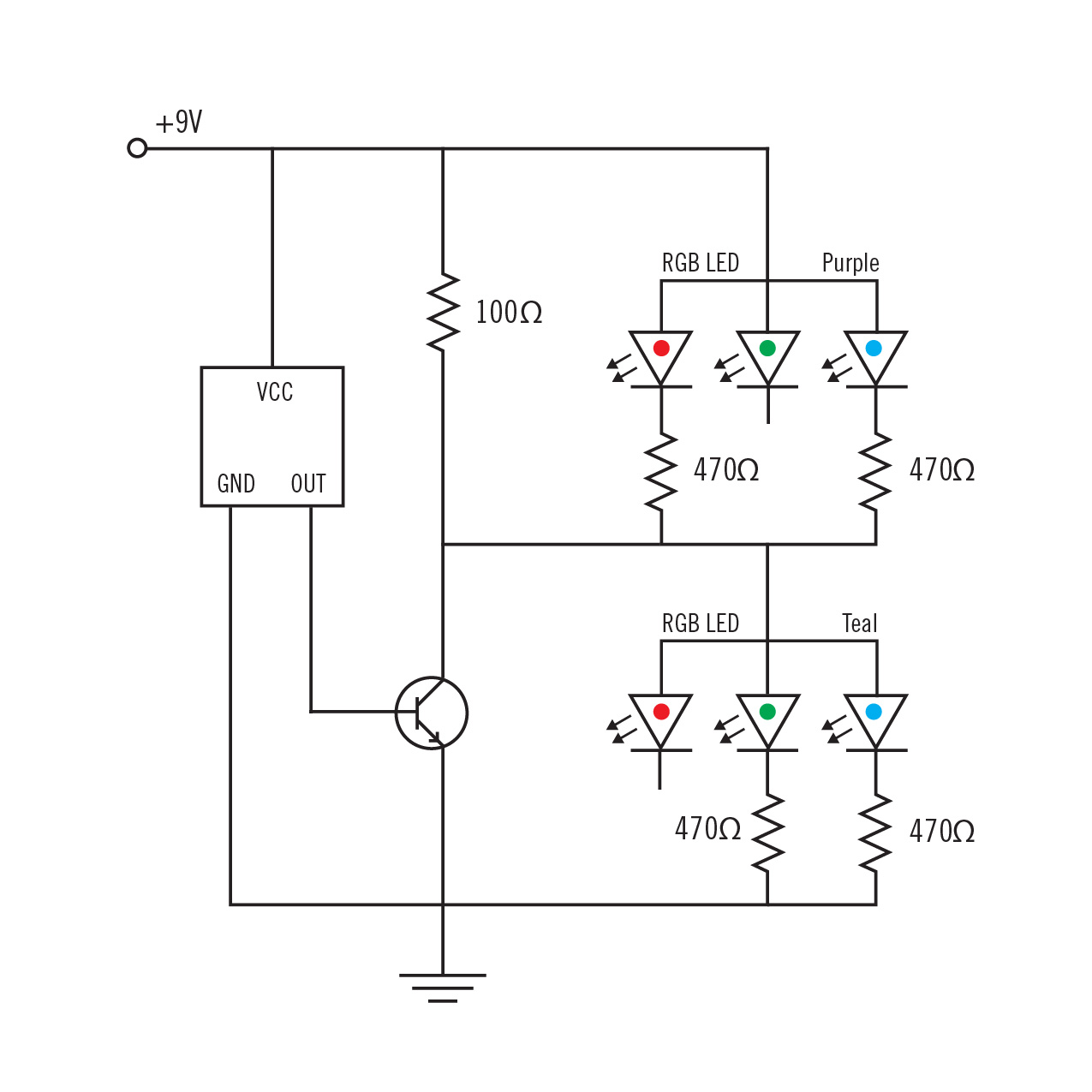Roles: Akiva Krauthamer as Integrator/Designer, Jesse Klein as Tutor/Designer, Gwen Sadler as Scribe/Designer
Introduction
There are inherent patterns in the seemingly chaotic world around us. Some are easy to notice; some less so. Our project is an attempt at visualizing the hidden patterns found in the auditory world. The device is a simple one-in one-out system, the “in” being any auditory stimulation and the “out” being a visual light pattern. Our circuit uses a microphone that is sensitive to frequency and volume. This signal oscillates between two colored LEDs. The circuit is mounted on a platform attached to a 10V DC motor. The summation of the frequency transmitted to the LEDs, the speed of the motor, and persistence of vision, creates complex cyclical patterns of light.
(left) underside off motor mount, (middle) motor clamping system, (right) example pattern
(left) breadboard prototype cicuit, (middle) soldered circuit, (right) fully assembled device
Technical Notes
The device can be thought of in two separate systems, the motor and it’s mount, and the rotating LED assembly. The motor mount is layered laser cut 1/8 inch wood glued and bolted tightly around the motor body creating a clamp. The circuitry is housed in between two pieces of laser cut masonite held in position with 1/4 in bolts. These two systems are connected at the motor shaft with a combination of layered masonite and glue.
The microphone outputs a digital signal that oscillates based on audio frequency. Using a transitor and a pull-up resistor the microphone signal switches between two RGB LEDs. Each of the LEDs has only two of the colored elements illuminated to create secondary colors.
The complexity of the patterns produced are challenging to document accurately because of the properties of the frame rate and exposure.
]]>
